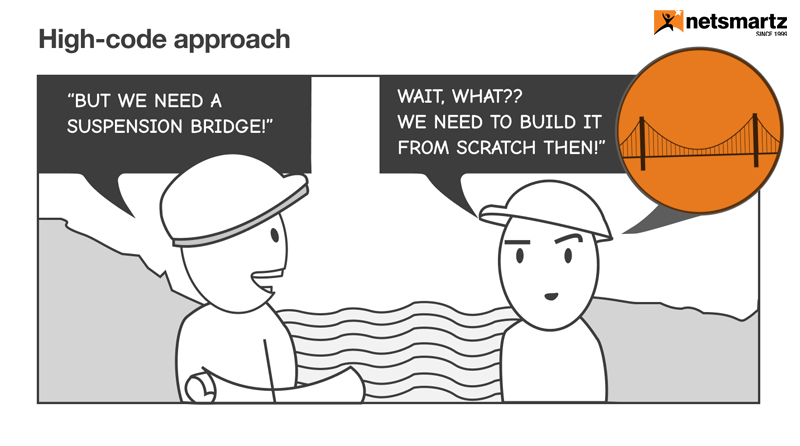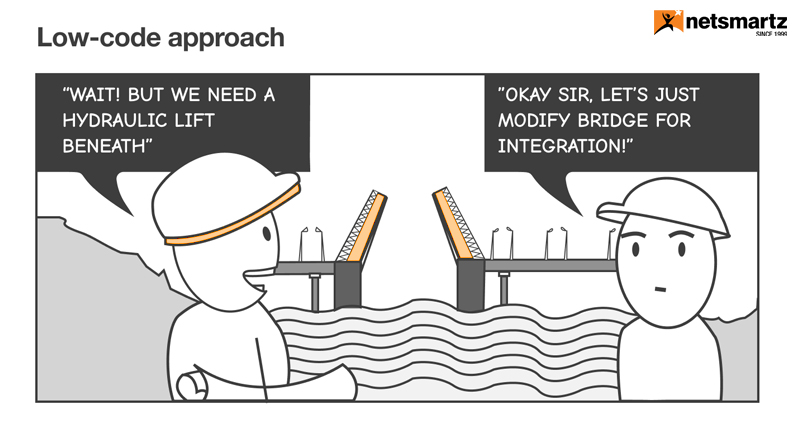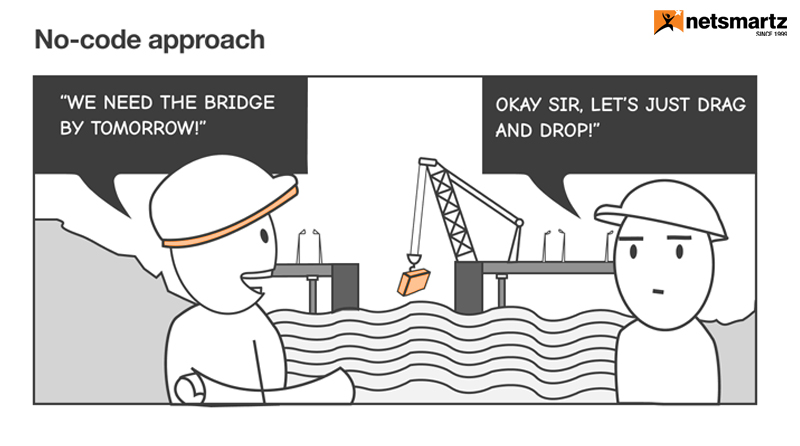In the past, developers carried the entire burden of crafting digital experiences from inception to completion. However, the modern paradigm acknowledges that this responsibility is no longer confined to developers. With the advent of advanced tools and platforms, specialists such as business users, marketers, and customer success teams now actively participate in creating these digital experiences.
To ensure that modern applications meet the highest standards, avoiding the trap of monolithic design is crucial. Component-based design principles have emerged as a solution, promoting low coupling and high cohesion. This approach enables the seamless assembly of components and services into diverse applications, catering to unique business requirements.
More intuitive methods and site-building tools have revolutionized the role of individuals needing coding or software development experience in shaping customer experiences. Let’s delve into the differences between high, low, and no code approaches to understand better how these developments have impacted the field.
A Quick Overview of High Code, Low Code, And No Code
High-Code

In high-code assembly, developers take the lead in writing and deploying code, particularly suited for applications whose code intricacies are closely tied to the overall user experience. JavaScript frameworks like React or Angular, as well as mobile or native application-specific frameworks, are commonly utilized in this approach. Content and data are typically accessed through a headless CMS or API-based services.
This method excels in creating a “code-driven” experience that remains tightly connected to code deployment cycles. While content and data can be managed and updated from remote systems on demand, developers have full control over the experience and interface.
However, relying solely on a high-code approach can lead to significant dependence on developer resources. With every task requiring a developer’s involvement, valuable time is diverted from more crucial work, such as creating new features and fostering innovations.
Low-Code

Low-code development has revolutionized the landscape of product development outsourcing, empowering businesses with enhanced speed, collaboration, and efficiency. By employing low-code tools, developers focus on constructing a composable platform and offering self-service tools to enable business users’ control over experience assembly. Additionally, they can create powerful components that are reusable across various applications.
The primary advantage of low-code solutions lies in their rapidity and collaborative nature. These solutions allow seamless rearrangement and repurposing to shape diverse experiences. Both marketers and developers play crucial roles in this process. While developers construct the components, marketers can assemble them to craft relevant and engaging customer experiences. This close collaboration accelerates time to market and marketing insights directly into impactful actions, resulting in enhanced customer satisfaction.
Despite the historical reluctance of developers to embrace low code and no code, concerns about functionality and security can be addressed by integrating robust governance and regulations into the types of components and systems utilized.
Through using pre-built components and self-service tools, businesses can optimize their development processes, expedite project delivery, and ensure a higher degree of customer satisfaction, making it a valuable asset in the competitive landscape of modern product development services.
No-Code

No-code assembly empowers marketers and business users, offering a hassle-free experience without writing any code. These solutions utilize forms, configurations, and simple input tools to manage experiences effortlessly.
Perfect for resolving department-specific issues, like content or asset updates, no-code solutions allow developers to focus on other critical projects. They also facilitate scalability through a cookie-cutter approach.
However, no-code tools have limitations when it comes to large-scale innovations or building new platforms. Extending them can be challenging and costly, and although they are quick to set up and use, their flexibility is often restricted.
For enterprise development solutions, consider partnering with a leading enterprise software development company to maximize the benefits of both high-code and low-code approaches.
The Differences Between High Code, Low Code, And No Code
| High-Code | Low-Code | No-Code |
|---|---|---|
| Involves skilled developers in writing and deploying custom code. | Utilizes visual interfaces and pre-built components for application creation. | Enables individuals with zero coding experience to build applications using intuitive visual interfaces. |
| Suited for complex applications with intricate functionalities and unique features. | Developers focus on building a composable platform, while business users can assemble the experience. | Requires no coding once the application is launched. |
| Developers have full control over the application’s user experience and interface. | Accelerates development speed and enhances collaboration across teams. | Ideal for solving specific departmental issues, like content updates, without involving developers. |
| Offers high levels of customization and flexibility. | Enables non-developers (e.g., marketers, business users) to contribute actively. | Facilitates quick setup and usability for small-scale applications. |
| Best suited for projects with specific requirements and unique business processes. | Allows for faster iterations and quick responses to changing business needs. | Limited in bringing about large-scale innovations or building complex platforms. |
| Longer development cycles and higher costs are common drawbacks. | It may need more customization and scalability for highly specialized functionalities. | Extensions may be challenging and expensive, and flexibility can be restricted. |
How Netsmartz offers high-code excellence?
As a leading product development company and enterprise software development company, Netsmartz stands out for its high-code excellence and commitment to agility, development velocity, and scalability. Our innovative approach and agile practices empower businesses with rapid application development and seamless scalability.
With a strong focus on high-code principles, we assist clients in crafting agile applications that adapt to evolving business needs. Our team of skilled engineers excels in microservice implementations, leveraging DevOps best practices to ensure the delivery of high-quality code at a remarkable speed.
Our commitment to customization and ease of development results in applications that precisely cater to their client’s unique requirements. Our solutions enhance app performance, and higher extensibility is a testament to our digital engineering excellence.
Summary
Kickstart Your Project With Us!
Popular Posts
CONTACT US
Let's Build Your Agile Team.
Experience Netsmartz for 40 hours - No Cost, No Obligation.
Connect With Us Today!
Please fill out the form or send us an email to







